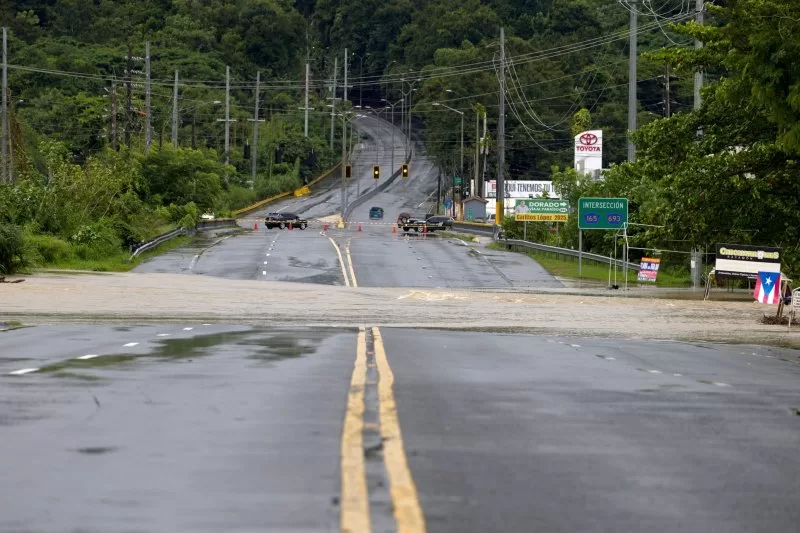Aug. 13 (UPI) — A hurricane watch was issued for Bermuda late Wednesday as Hurricane Ernesto churned in the Atlantic and was expected to strengthen.
The storm does not pose a threat to the U.S. mainland.


A road is flooded in Toa Baja, Puerto Rico, on Wednesday after the passage of Hurricane Ernesto to the north of the island. Photo by Thais Llorca/EPA-EFE
Aug. 13 (UPI) — A hurricane watch was issued for Bermuda late Wednesday as Hurricane Ernesto churned in the Atlantic and was expected to strengthen. The storm does not pose a threat to the U.S. mainland.
In its 5 p.m. update, the National Hurricane Center located Ernesto about 180 miles east of Grand Turk Island, and about 765 miles south-southwest of Bermuda.
It had maximum sustained winds of 75 mph, a Category 1 storm on the Saffir-Simpson Hurricane Wind Scale, and was traveling northwest at 16 mph.
Forecasters expect the storm to move over the western Atlantic later in the week with Ernesto’s center expected to pass near Bermuda by Saturday.
Bermuda is now under a hurricane watch.
Hurricane-force winds extend outward up to 35 miles from the storm’s center and tropical storm-force winds extend outward up to 175 miles, NHC officials say.
A tropical storm warning was in effect for the British Virgin Islands, U.S. Virgin Islands, Puerto Rico as well as Vieques and Culebra.
NHC forecasters said the storm is expected to produce as much as 6 inches of rain on Bermuda with isolated maximum amounts of 9 inches.
Earlier in the week, Puerto Rico began to prepare.
Hurricane Maria in 2018 caused an estimated $90 billion in damage in Puerto Rico and the U.S. Virgin Islands, NHC said. Maria was the most destructive hurricane to hit Puerto Rico in modern times and the third costliest hurricane in U.S. history behind Katrina and Harvey.
Maria also knocked down 80% of Puerto Rico’s utility poles and all transmission lines, resulting in loss of power to essentially all of the island’s 3.4 million residents. Nearly all cellphone and municipal water supplies also were knocked out.
The Atlantic hurricane season already has been active.
Debby was a Category 1 storm that made landfall in the Florida Panhandle and then moved through the U.S. Atlantic Coast last week.
Beryl struck parts of the Caribbean, the Yucatán Peninsula and the Gulf Coast of the United States in late June and early July.
Two tropical storms were in the Gulf of Mexico in June: Cindy and Alberto.